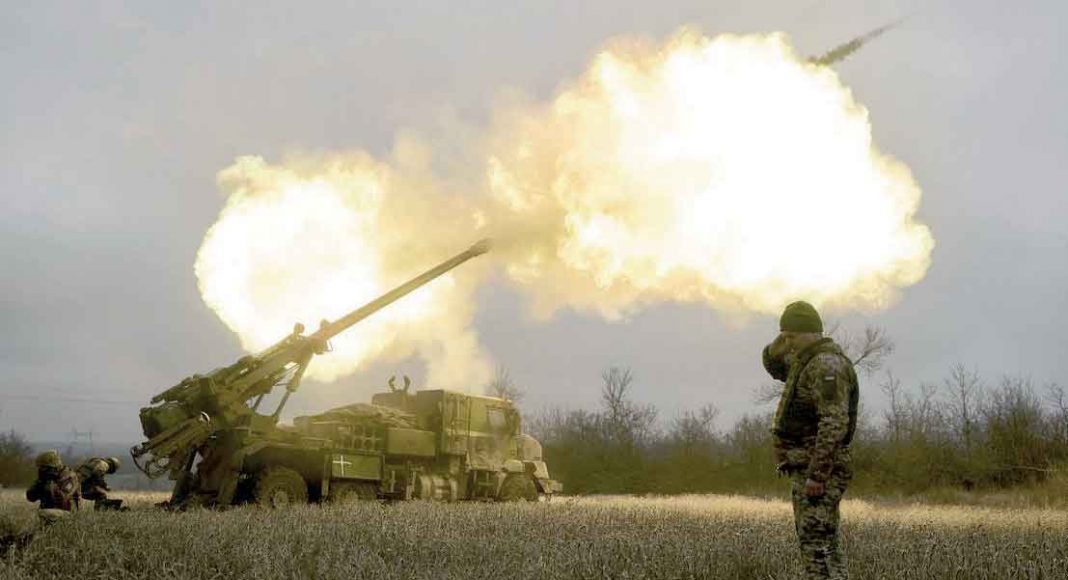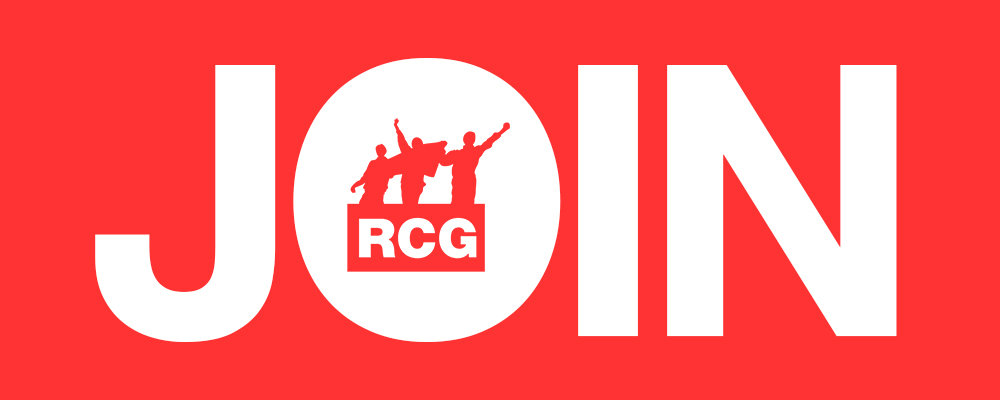The NATO proxy war with Russia in Ukraine has entered its third year. The Ukrainian counter-offensive, which began in June 2023, has ended in failure. Despite the enormous financial and military support provided by Ukraine’s Western imperialist backers, acute manpower shortages, compounded by massive troop losses and ammunition scarcity, are eroding Ukraine’s defences. The war is still in a stalemate, but Russia is now advancing after months of sitting behind well-entrenched positions. Despite wide-reaching sanctions imposed by the Western imperialists, Russia is economically and militarily well positioned for the continuation of the war. These objective developments are accelerating divisions amongst Ukraine’s imperialist backers in the US, European Union, and Britain on how to continue the conflict. They remain consistent, however, on constant escalation and provocation against the challenge Russia provides to Western imperialist hegemony. GEORGE O’CONNELL reports.
Ukrainian military desperation
Ukraine’s military situation is deteriorating. Serious estimates of Ukrainian casualties, that is those killed and wounded, are in the hundreds of thousands, highly significant considering there were only 300,000 active military personnel before the start of the war. The average age in the Ukrainian army is over 40. In December 2023, Ukrainian President Zelensky announced aims to mobilise half a million new soldiers. As we go to press, a new draft law is being considered which would lower conscription age from 27 to 25, filling the majority of this 500,000 target with new conscripts aged 25-26. Also included in the bill are measures to crack down on draft dodging. Ukrainian martial law bans able-bodied men aged 18-60 from leaving the country; it is estimated over 750,000 have fled the country to avoid being sent to the front lines.
Months of stalemate with static front lines have made artillery use central to the conflict. Ukraine’s has constantly suffered artillery shell shortages; these have become more acute in recent months. Its forces are now limited to firing 2,000 shells a day, meaning it can only field a proportion of its 1,500 or so artillery pieces. Western production is still unable to keep up. The US and EU each plan to produce one million shells per year by the end of 2024, but even this allows for no more than 6,000 shells per day, compared Russia’s estimated 10,000 per day.
Russia consolidated
Russia’s casualties are also significant, and it has also been forced to draft more troops through successive changes to conscription laws. Prior to the war, Russian men aged 18-27 were required to serve one year of military conscription. The maximum age was raised to 30 from January 2024. This follows the drafting of 300,000 reservists in September 2022. Military and financial assistance provided to Ukraine by the Western imperialists, totalling $278bn, has forced Russia further into the conflict.
Despite this, the Russian economy has been able to weather the sanctions imposed since the start of the war. Fossil fuel exports, responsible for 15-20% of Russian GDP in recent years, have continued as countries like China and India have stepped in to take up the demand. Russian oil production is only down slightly from pre-war levels: 9.5m barrels per day (bpd) from 10.8m bpd. In August 2023 Russia overtook Germany in GDP purchasing power parity, a metric adjusting GDP for more suitable comparison. At $5.3trn, this places the Russian domestic economy as the largest in Europe, driven largely by a massive increase in the domestic arms industry, which now accounts for 7.5% of GDP and employs 3.5 million people. NATO estimates Russia is currently producing three million artillery shells per year.
The imperialists now fear a Russian advance, after months of entrenchment. In February Ukrainian forces were forced into a hasty retreat from the Eastern city of Avdiivka, hailed as the most significant Russian victory since capturing Bakhmut in May 2023. The Russian government under Putin has consolidated its position in the recent elections held 15-17 March, announcing a win with 87% of the votes. There is currently no significant domestic opposition to Putin or the war.
90 seconds to midnight
To confront Ukraine’s increasingly precarious military situation, its imperialist backers have been supplying steadily more advanced weaponry. At each stage, debates arise over ‘red lines’: if the new weapons risk a major escalation and Russian retaliation. These red lines have constantly shifted as more advanced equipment is proffered. British Foreign Secretary Lord Cameron dismissed any concerns at a joint press conference with his German counterpart in Berlin on 7 March:
‘At every stage it’s been said “if you give anti-tank weapons to the Ukraine, that’s escalation”. No, it wasn’t. “If you give tanks to the Ukrainians, that’s escalation”. No, it wasn’t. “If you give long-range artillery or long-range fires to the Ukrainians, it’s escalation”. No, it isn’t.’
Cameron’s visit to Germany aimed to press German Chancellor Scholz to provide Ukraine with Taurus long range missiles. Germany has expressed more concerns about escalation than its NATO allies. Britain was the first to provide long range missiles, followed by France and then the US. Germany’s Taurus missiles have a longer range than those Ukraine currently possesses, and Scholz has expressed alarm at the prospect of their being used to strike deep inside Russian territory as far as Moscow. Cameron knows that Germany made concessions in the past: it sent Leopard 2 tanks to Ukraine in January 2023 after a U-turn on previous reluctance. The deployment of Taurus would be another escalation.
A concern amongst the major European imperialists is Europe’s ability to be seen as a guarantor for protection against Russia, especially amongst the Eastern European countries which border Russia, as well as the Baltic and Scandinavian states. These states are the top seven providers of financial and military aid to Ukraine when measured against GDP. The risk is the US being perceived as the only force capable of playing this role and thus expanding its influence.
The US military has been granted free access to several military bases in Finland and Sweden following negotiations in late 2023 and early 2024. Following a similar agreement with Norway in 2022, the US now has access to some 40 bases across the three countries. Furthermore, in December 2023, the US agreed a five-year defence cooperation deal with the three Baltic states Estonia, Latvia, and Lithuania. A permanent US military garrison was established in Poland in March 2023.
The US continues to be the de-facto leader of NATO. It contributes to two thirds of NATO’s defence budget and is the source of 40% of all military aid sent to Ukraine. On 21 March, the expansion of an existing NATO base in Romania was announced. This will become the largest NATO base in Europe, surpassing the US air base in Ramstein, Germany.
To counter growing US military influence, the major European imperialists will have to increase their military capabilities enormously. This process is already underway. Germany is rearming at a pace not seen since the run-up to the Second World War. Three days after the invasion of Ukraine, Scholz declared a ‘Zeitenwende’, meaning ‘new era’, and a €100bn package to boost military spending up to 2027. Germany will spend €74bn on its military this year, a post-war record. It aims to overtake Britain and Russia as the largest military spender in Europe. This will be accompanied by savage cuts to other government spending: €30bn of cuts planned for 2024 include €1.5bn directly from social spending and an end to the €5.5bn federal subsidy for electrical grid charges.
Another significant red line is deployment of NATO troops in Ukraine. In February, France’s President Macron provocatively stated that ‘nothing is excluded’ in relation to NATO ‘troops onto the ground’ in Ukraine, creating tensions with Germany. Russia has warned that such troops would become a ‘priority target’. Small numbers of NATO troops are anyway operating in Ukraine. The war in Ukraine is an expression of rapidly intensifying inter-imperialist rivalry so a path of constant escalation is inevitable. The rhetoric from top European generals is now one of direct confrontation with Russia. The number of red lines left before all-out nuclear confrontation is decreasing.
Trump re-election
Macron’s belligerent comments were also a political gamble based on the prospect of a Trump victory in US presidential elections and a withdrawal of US support for Ukraine. Current polls for the election, due to be held in November, are very close, but many put Trump slightly ahead. Trump’s Republican Party has been opposing US aid to Ukraine for months, The latest aid package totalling $60bn has been held up in Congress for six months, blocked three times by right-wing Republicans loyal to Trump. Trump has famously declared he would end the war ‘in a day’ if elected.
Trump regards China as the single greatest threat to US hegemony. He has promised more tariffs on Chinese goods if re-elected, as high as 60%, to add to aggressive economic measures taken by the Biden administration. Trump’s approach comes in the context of a deepening economic and political relationship between Russia and China, catalysed by the war in Ukraine. In FRFI 298 ‘Ukraine – military stalemate, political divisions’, we said:
‘The attempts to isolate Russia from the international arena have also failed: while trade between Russia and Europe has, since 2022, fallen by 70%, […] between January and November last year the trade between Russia and China was over $218bn, 26.7% more than the same period in 2022.’
The risk is that a continuation of the war in Ukraine will further strengthen China’s relationship with Russia. Trump’s declared intention to end the war ‘in a day’ and opposition to further aid to Ukraine is calculated to mitigate this risk.
Trump remarked in February he would ‘encourage’ Russia to do ‘whatever the hell they want’ to European NATO members that don’t meet defence spending targets. In 2014, NATO set a target for members to spend at least 2% of GDP on their militaries. Most of NATO’s major imperialist powers are yet to meet the target, including Germany, Canada, France, Spain, Italy. The collective deficit for NATO’s European members is estimated at €56bn yearly. Stoltenberg asserted in March however that two thirds will meet the target in 2024.
British imperialist belligerence
Despite the divisions between the US and European imperialists, British imperialism has remained firm in its commitment to arming Ukraine. It is the third largest provider of weapons, totalling $10bn. The British ruling class, hopelessly divided on so many issues, is united on the question of agitation against Russia. A phone call between German air force officials, leaked by Russia in March, revealed British soldiers ‘on the ground in Ukraine’, helping operate Storm Shadow long-range missiles provided by Britain.
Britain is the only imperialist country to commit military support to bomb Yemen alongside the US since January 2024. On 28 March, Russia, having struck a deal with Ansar Allah for safe passage of their ships, deployed warships to the Red Sea, where British and US ships are currently carrying out their military campaign against Yemen.
The intensity of inter-imperialist rivalry risks spiralling into a global, nuclear conflict. So far, Britain has played a dangerous role of agitating for constant escalation. It is a role that would be continued by a government under the Labour Party, which has marched in ‘lockstep’ with the belligerence of the Tory government throughout the conflict.
FIGHT RACISM! FIGHT IMPERIALISM! 299 April/May 2024




